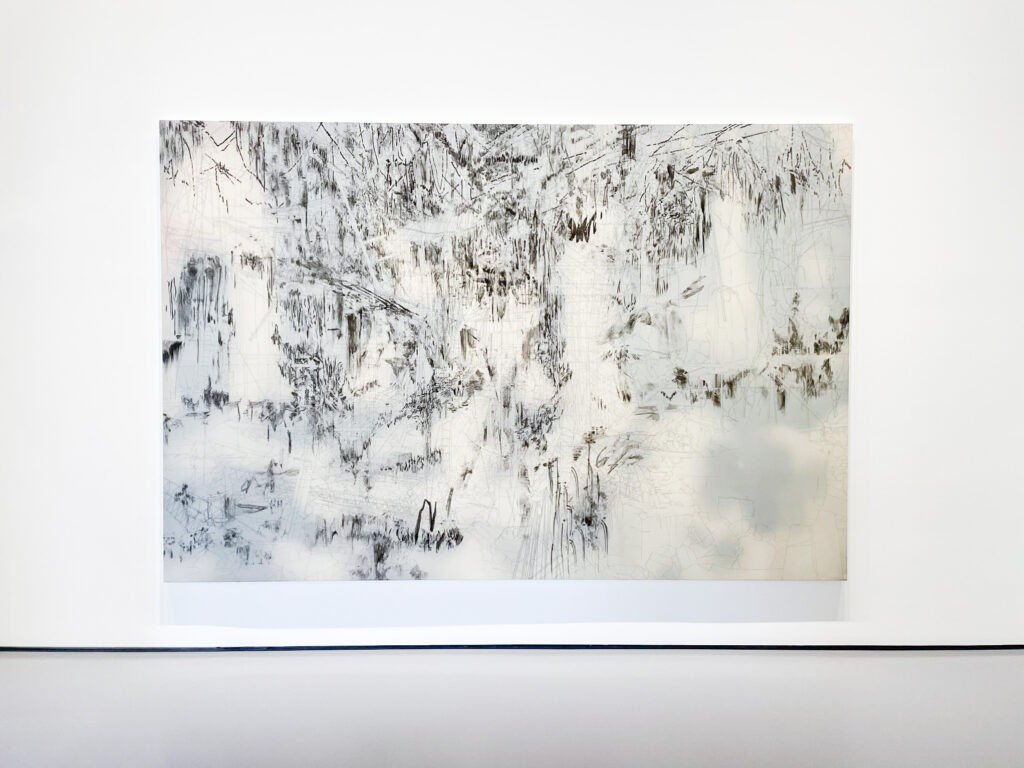First, the Estonian Pavilion, bravo!
One could simply say that Edith Karlson has created a very successful and universally engaging site-specific installation that doesn’t even require an accompanying explanatory text, but in my opinion, it is the best national pavilion this year. Edith successfully manages both the scale and scope of a major solo exhibition, as well as this highly demanding and pre-programmed space. Connecting with the Biennale theme “Strangers Everywhere” on the most human level—without politics, colonial guilt, or environmental blame—a whole menagerie of the Lord’s creatures unfolds before us in the church space, in both reality and imagination. This place—a former sacred site—seems as if it were created for these works, not the other way around. In any case, it is mesmerizing and worth the walk to the edge of the Venetian island. Upon arrival, you find yourself gazing endlessly and discovering yet another sparrow, another snake, another stork, and a fish-headed mermaid.
The Biennale Exhibition Curated by Adriano Pedrosa
This year’s curator exhibition was physically lighter, more airy than the previous one. In terms of content, of course, it was multifaceted and thought-provoking. Understandably, it focused heavily (based on the theme “Strangers Everywhere”) on people forced to leave their homes, people who don’t fit into social norms, and it referenced class, race, gender, environmental, and capitalism critiques extensively. The entire repertoire of contemporary art’s aesthetics and ethics was worked through from the perspective of the foreigner/outsider, with world pain keenly felt. Perhaps only art is still able, even in the third decade of the 21st century, to convincingly (unlike the media or social media) deal with enlightened racism, monochrome history, or modern slavery. The encounter between the Eurocentric world and the global South, and colonial guilt will likely provide material for many future Biennales. A separate display was dedicated to the art of artists who emigrated from Italy.
However, the most captivating part for me was where the curator undertook an analysis of art and the artworld itself—which is full of strangers and those who estrange. Extra effort was made to find artists previously not represented in large formats and to select works that could be considered more craft than high art. It wasn’t just outsider art, but rather a more refined critique of the institutional art establishment that practices labeling and exclusion policies. Art is rarely critical of art itself, but this time it was done in an enjoyable manner.
I also noticed a significant number of works dealing with male gender. Not with the normalization of queer (which was also abundant) or criticism of toxic masculinity, but rather showing the diversity of being a man. Showing a man not as a man, but as a human being. In several works, as a dancing/moving person, and also as someone moving between states of mind.
Image vs Text
A particular attraction at this art event is the text that accompanies the art. At times, it supports, explains, and is essential for understanding the works, but at other times, it can be entirely tedious—a specialized sociolect that tries to elevate an underwhelming work. Occasionally, it’s contextually laughable when a national pavilion from a dictatorship speaks of diversity and borrows quotes from Western cultural history.
Three Exhibitions That Struck an Emotional Chord
- First, Christoph Büchel’s project “Monte di Pietà” presented by Fondazione Prada. A total installation where the historical palazzo Ca’ Corner della Regina has been turned into a pawnshop open for its last days. It includes everything that living in debt brings with it—from the sale notice on the canal-side facade of the building, which immediately misleads and makes you question whether you’re in the right place, to the highly valuable art pieces where it’s unclear whether they are cheap reproductions or museum loans. I won’t say more, you have to experience it yourself.
- Julie Mehretu’s “Ensemble” at the Pinault Collection’s Palazzo Grassi is simply an outstanding painting exhibition. Her surfaces, lines, forms, and colors draw you in and hold you captive. Both from up close and afar.
- Pierre Huyghe’s “Liminal” at the Pinault Collection’s Punta della Dogana blurs the boundaries between reality and fiction. All your senses are tested, and your brain is twisted by both visuals and the claims of what you are seeing. Is it really possible to project (retrieve from the brain) images from memory?
All three are contemporary art superstars and predictably very good, but the fact that each was so strong in their own theme and medium was still overwhelming. There was so much to see, listen to, and think about that by the end of the third exhibition, I reached a saturation point—I couldn’t take in any more art.
The 60th Venice Biennale is open until November 24th and is highly recommended for every contemporary art enthusiast.
Siim Raie, Artrovert gallery.



